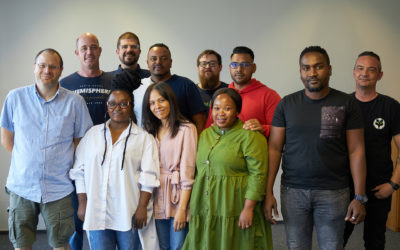Building a responsive digital business through monitoring
Read time 3min 50sec
Posted by: Kenneth Dolbey, New Business Development, Sourcing EMEA
The world’s gone digital and there’s a fundamental need for companies to change the way they think about their business. While businesses in the physical world have the luxury of being able to monitor operations by simply being there, this isn’t possible in the digital world.
The key difference between legacy business and the modern organisation is the role of technology in ensuring their basic operations and the use of that technology to provide visibility into all areas of operation.
Kenneth Dolbey, New Business Development at Sourcing, comments that as a business that operates in this 24/7 world, it would be impossible for them make good on the promises they make to their clients without technology.
“Across the board, companies are expected to be continuously available to their customers, but often they aren’t prepared to operate in this always-on world.”
He explains that there are three critical areas that companies need to focus on to ensure their continued success. These are monitoring, automation and collaboration.
Three key elements
While automation and collaboration are vital to the success of the modern business, their effectiveness is severely handicapped without comprehensive monitoring.
“In the past, the business owner could keep track of all the comings and goings in the business just by being actively involved. Today, business is so complex that it’s impossible for a human to keep track of the processes that power the modern organisation,” Dolbey says. “More than not being possible, it’s actually not desirable. By embracing automated processes, operations managers don’t need to know when things are going right, they only need to know when there is an issue. It’s here where the power of monitoring comes into play.”
Having a strong monitoring capability enables companies to collaborate more effectively.
“We’ve seen a massive rise in the role played by collaboration services over the past year and companies are now taking their investment in this area very seriously,” he comments. “In the always-on economy it’s critical that the right information can reach the right people at the right time. When something goes wrong, or a decision needs to be made, you need a platform that brings the right people together quickly and efficiently. Customers expect decisions to be made almost immediately and a delay of days, or even hours, has a real impact on customer satisfaction.”
It’s not possible, however, for people to be always available. Especially in smaller, and local, businesses the resources aren’t there to provide this level of support. “To ensure that you can meet customer demands, you need to embrace automation,” he says. “Many of the tasks that used to require human intervention can now be automated and, with the growth in AI and automated customer support systems, it’s possible to hand off routine tasks to automated systems.”
However, automating processes and driving collaboration are nothing without the monitoring services in place to ensure that any issues are addressed in a responsive manner.
Meeting customer and employee expectations
“This is at the heart of meeting customer expectations,” he says. “The challenge for all organisations is identifying any issues before they impact customers or employees, as opposed to waiting for someone to complain. To make this happen, access to high-quality data is essential.”
We’ve now entered an era where both customers and employees are incredibly technology savvy. How organisations interact and respond is not being evaluated just against past performance, but rather against all other organisations. The result is that small, local companies are being measured against global organisations with budgets orders of magnitude larger.
However, Dolbey points out that the size of the company isn’t what will define success in the digital world. “Today, people value responsiveness more than almost anything else. People want to know they are being heard and their concerns addressed. Through proactive monitoring and seamless collaboration, customers can have their issues resolved almost in real-time. It’s not the company with the most money that will succeed in this always-on world, it’s those that are the most responsive,” he concludes.



